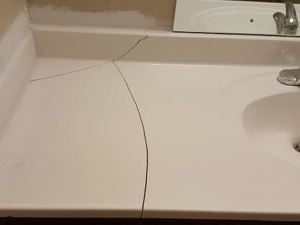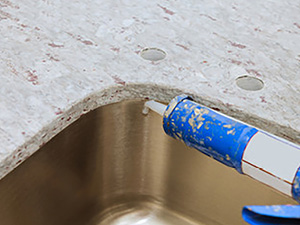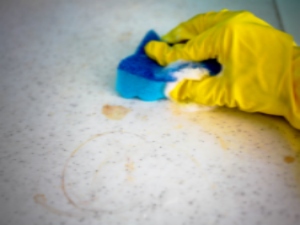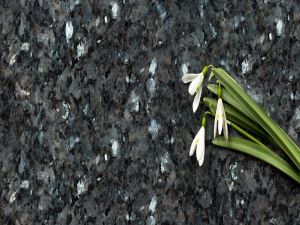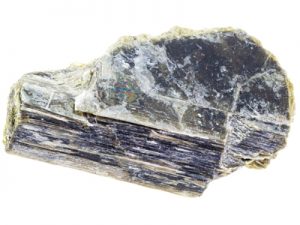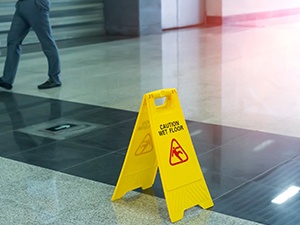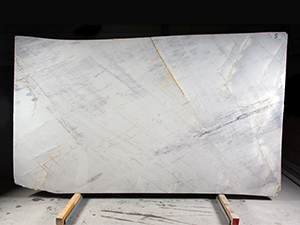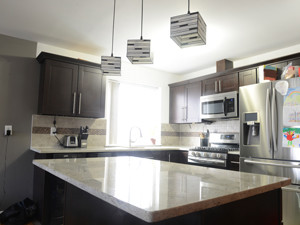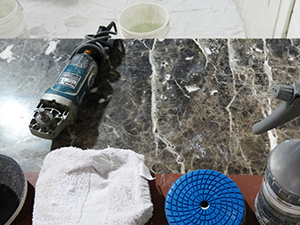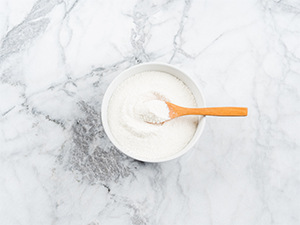Are cultured marble and real marble the same thing?
Cultured marble and real marble sound the same, but they are two completely different things. Each one is created differently. They are fabricated differently, and they are installed, cared for, and repaired differently. The only real similarity is that they both have marble in their name.
What is cultured marble?
Cultured marble is a man-made product that contains dyes, marble dust and resin. After it’s made, it gets coated with a high-shine, clear gel to protect it. Because of the way it’s made, cultured marble is more closely related to Corian or Hi-Macs solid surfaces. It is often called faux marble.
What is real marble?
Real marble is created by mother nature. Man has nothing to do with it. What man does is quarry it out of the earth, cut it, polish it, and install it in different projects.
How can I tell the difference between cultured and real marble?
- Cultured marble projects have integrated sinks and backsplashes. (All one-piece design). Real marble projects have separate backsplash pieces and separate sinks.
- Cultured marble can be manipulated to mimic real marble but will have a flat appearance that lacks depth. The protective gloss can even make it appear like plastic. Real marble will have depth to its look.
- Cultured marble, made in a factory with a formula, has a consistent look, piece after piece. No two pieces of real marble are identical.
- Cultured marble is considered more of a budget friendly product while real marble is considered more of a luxury item.
- Cultured marble never needs sealing. Real marble does.
- The protective coating on cultured marble gives it a high shine. Marble may have a high shine, but it can also have a dull, matte finish, giving it a softer look.
While cultured marble and real marble have vast differences, they can both be cleaned and maintained in basically the same way, with non-abrasive, pH-neutral cleaners. Look for cleaners that specifically state they are for cleaning cultured marble or real marble, depending on what you have. Both materials can be etched by harsh, abrasive chemicals and cleaning products. Both can also sustain chips, scratches, and cracks. Even though they can both be damaged in similar ways, the tools and processes used to fix them are different.
Can cultured marble be repaired?
Most damage on cultured marble can be repaired if the gel coat has not been penetrated or removed.
- Light scratches can be addressed with automotive buffing compound.
- Cracks and chips can be repaired with a retail repair kit specifically designed for cultured marble. It may be best, however, to let a professional stone restoration contractor handle such damage for the best possible results.
- Since the gel coat on cultured marble is non-porous, deep stains don’t normally happen. Usually, stains can be dealt with by using a cultured marble cleaner or denatured alcohol and a non-abrasive pad.
- Deep scratches or large chips and cracks may require a professional restoration technician or may require replacement altogether.
- If the gel coat has been worn off, damaged or removed, it is also best to call a professional restoration contractor.
Can real marble be repaired?
Under most circumstances, real marble can be repaired to new or almost new condition.
- Light scratches can be minimized by using a dry, soft buffing cloth in a circular motion after cleaning the area with warm, soapy water.
- Cracks and chips can be repaired with a retail repair kit specifically designed for real marble or natural stone. It may be best, however, to let a professional stone restoration contractor handle such damage for the best possible results.
- Stains can usually be drawn out with a poultice. Once you identify the stain, look at the Stain Care App on our website under the Resources tab to see what sort of poultice you need.
- Deep scratches, set-in stains, etch marks or large chips and cracks may require a professional restoration technician.
- If your marble needs to be resealed, it is best to call a professional.
While cultured marble and real marble are vastly different surfaces, they each have the potential to enhance the look of different projects in your home. The key is to realize which one you have so you can properly clean and maintain it, keeping it beautiful for years to come.
By Sharon Koehler. This article is one of a series of articles written and published on behalf of Surface Care PROS Partners.

